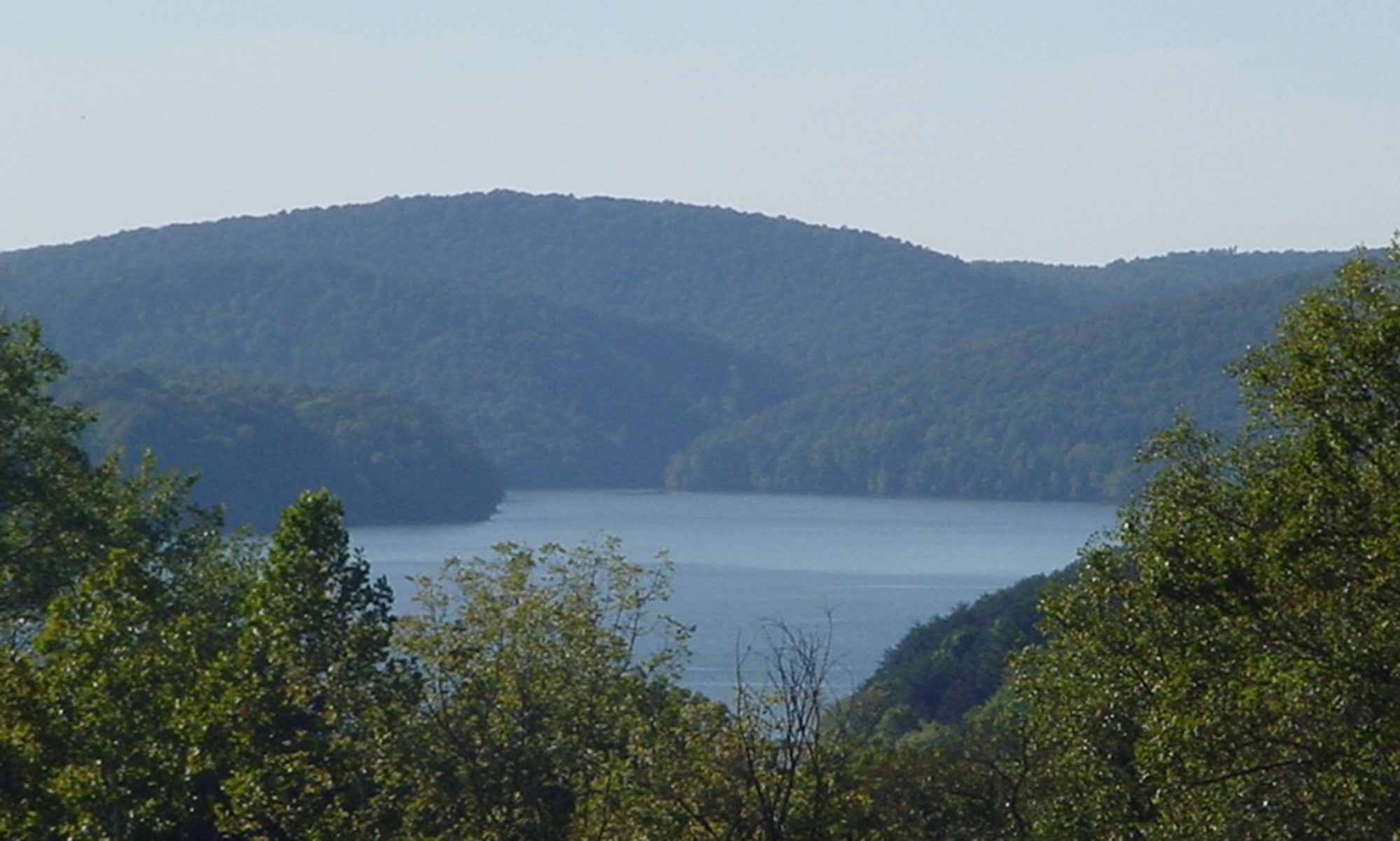Leesville Lake is part of the Smith Mountain hydro-electric pump storage project on the Roanoke River built by AEP in the early 1960’s. It begins at the base of Smith Mountain Dam and snakes 17 miles to Leesville Dam which is just upstream from Leesville Virginia and the mouth of Goose Creek. It is the “lower” lake of the pump storage system and lake levels fluctuate between 600 ft to 613 ft above mean sea level. The lake covers 3,270 acres containing 94,900 acre-feet of water at full pond.
Hydro electric generation provides power mostly during hours of peak demand. Water passes thru Smith Mountain Dam’s generators into Leesville Lake during periods of peak demand and the generators are used as pumps to return the water during a period of low demand using excess power in the AEP system. Steam generation plants must continue to stay in operation during low demand. The excess power can be “stored” as potential energy in the water of Smith Mountain Lake. One foot of water in Leesville Lake will raise Smith Mountain approximately two inches. The highest peek demand periods are hot summer days and cold winter mornings. Leesville Lake has a maximum refill rate of 1.33 feet per hour and a maximum drawdown rate of 0.46 feet per hour.
Smith Mountain is the first Appalachian project to utilize the pumped storage concept. In pumped storage, water does double duty. It passes from the upper lake through turbines of Smith Mountain Dam into the lower lake. Some of this water passes through the turbines of the lower dam at Leesville, but a portion is retained in the lower lake. Then at night, weekends or whenever demand for power is low, three of the turbines in the upper dam are reversed to act as pumps to draw water from the lower lake back into the upper lake to be used again.
Get the current lake level from AEP’s Environmental Website.
Facts and Figures
The Mile Markers
Leesville Lake Mile Marker Locations
The Dams:
| The Smith Mountain Dam | The Leesville Dam | |
|---|---|---|
| Height from riverbed | 227 feet | 90 feet |
| Length, not including abutments at each end | 816 feet | 920 feet |
| Type of construction | Concrete Arch | Concrete Gravity |
The Lakes
| Smith Mountain Lake | Leesville Lake | |
|---|---|---|
| Length of lake | 40 miles | 17 miles |
| Storage (approx.) | 1,100,000 acre-feet | 110,000 acre-feet |
| Area (approx.) | 20,000 acres | 3,400 acres |
| Shoreline | 500 miles | 100 miles |
The Power Plants
The Smith Mountain Dam employs five generating units. Of those five, two are conventional generators while the other three are reversible pump/turbines. The Leesville Dam employs two conventional generators. The Smith Mountain project currently has a combined installed capacity of 636 megawatts.
Recreation
Water and outdoor enthusiast of all kinds (boaters, skiers, fishermen, swimmers, campers, hunters, nature lovers) find Smith Mountain and Leesville Lakes a wonderland of enjoyment. A continuous program of stocking the lakes with millions of game fish is maintained by the Virginia Department of Game and Inland Fisheries. The lakes have been called one of the best fishing spots in the eastern part of the nation. Appalachian Power Company has established picnic areas at both Smith Mountain and Leesville Dams, which are open to the public. They feature shelters, tables, fireplaces, comfort stations and fountains. Appalachian Power Company has also developed a public information center at the Smith Mountain Dam. Other recreational facilities and opportunities are available on the lakes, the largest inland water recreation project located solely in Virginia.
Preservation
Cleanliness is next to Godliness is an axiom completely endorsed by the public officials, property owners and visitors to the region. State statutes prohibit littering or dumping trash, etc. on the highway, right of way or public property and prescribe severe penalties for the offender. Similarly, when on your boating or fishing trip, do not throw sewage, garbage or trash of any kind in the water. If receptacles are not furnished, take it with you and dispose of it legally and sensibly when you return to shore. You are asked to report flagrant violation of the pollution laws to the closest health department and/or the sheriff.


